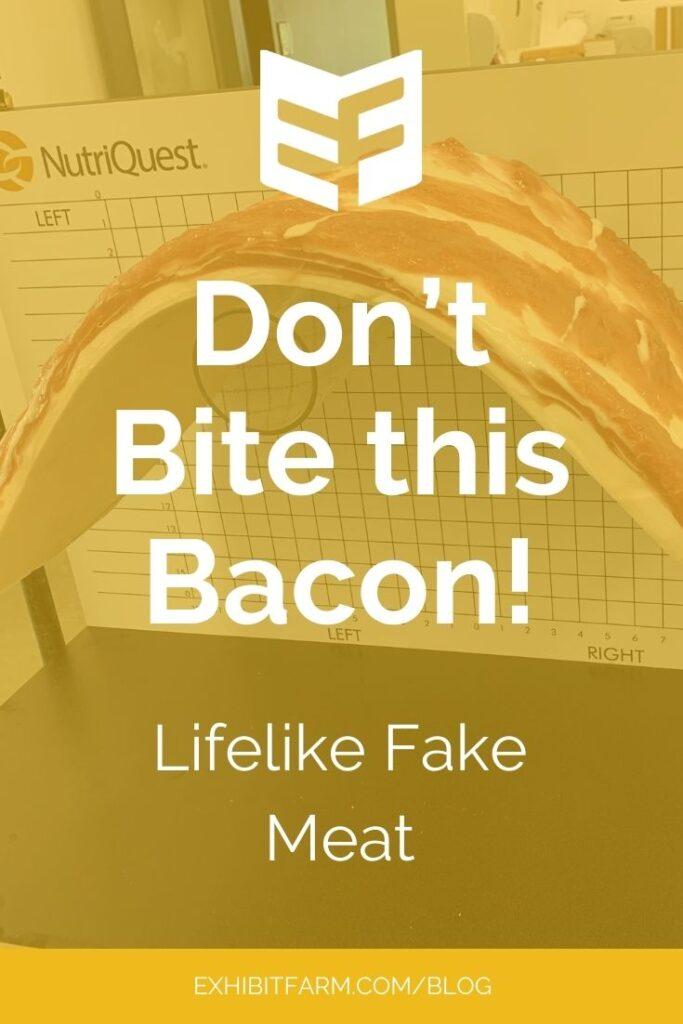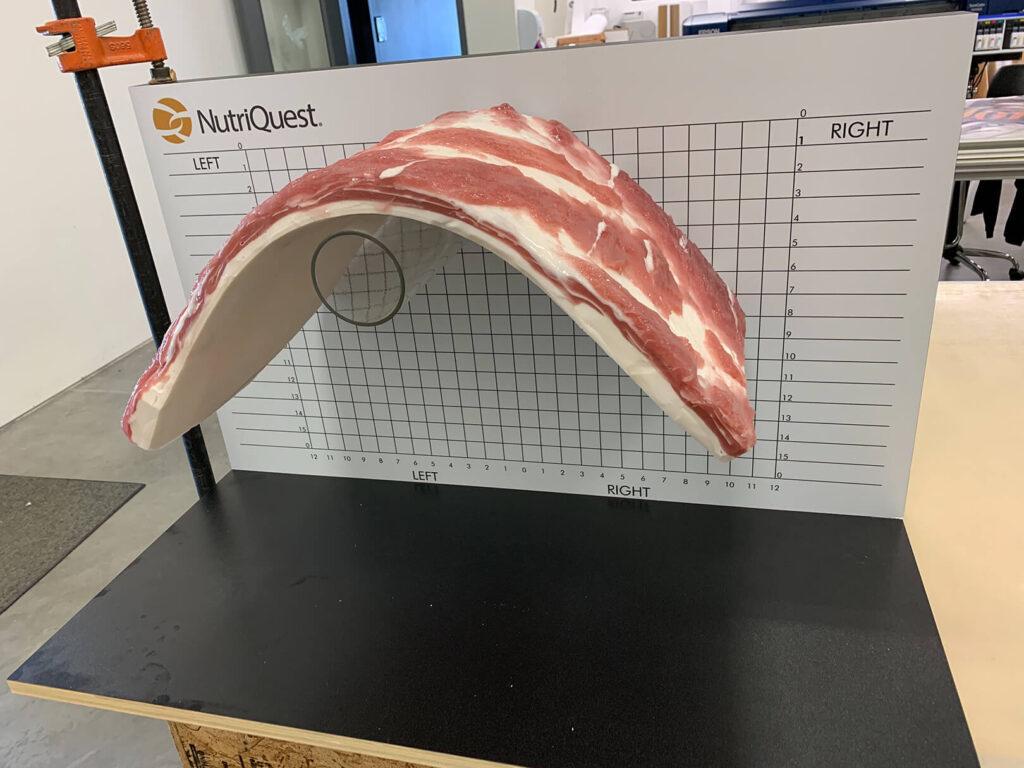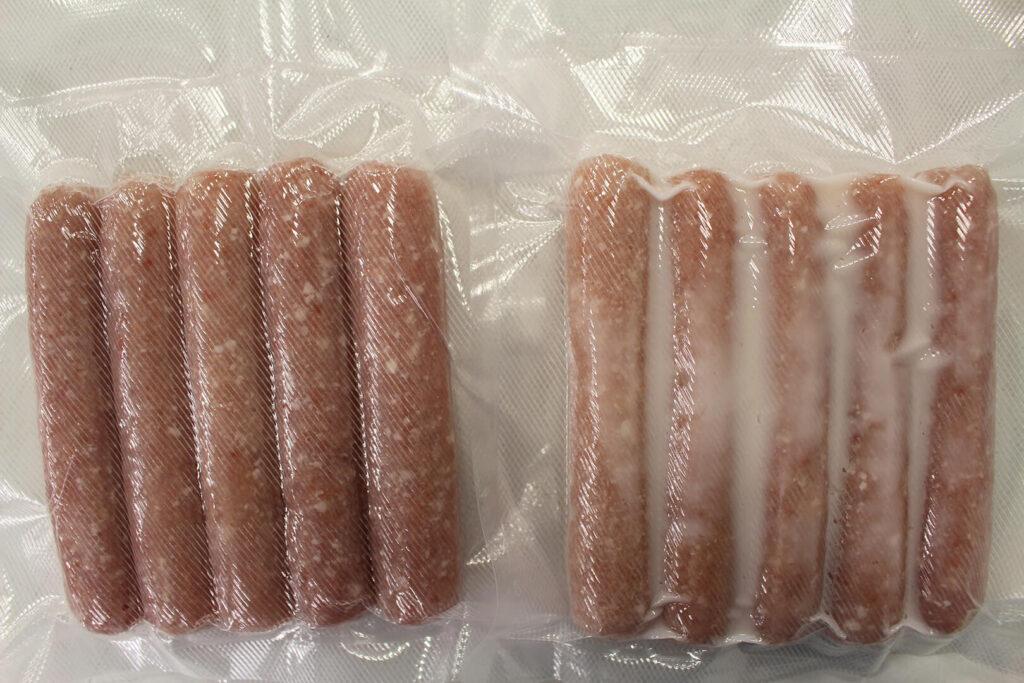
We make a lot of artificial plants around here. Whether it’s some corn, some soybeans at various growth stages, or even nutrient-deficient alfalfa, we put a lot of time into creating lifelike replicas.
When we got an order from NutriQuest, though, we found ourselves looking at a kind of replica we hadn’t tackled before. As a major feed supplier for the livestock industry, NutriQuest wanted us to make some realistic fake meat. Certain pieces even had to have the right texture. It was a new challenge, for sure.
(You can see more photos of the faux meat displays on our custom products page.)
Better Bellies, Better Bacon
The first thing NutriQuest needed was a display showing how one test of pork belly firmness works. Pork belly is an important cut — it’s the cut bacon comes from. But quality is crucial, especially how firm the meat is. Pork bellies that aren’t firm enough are harder to cut and tend to produce lower-quality bacon. And who wants that? Not consumers, and not farmers either. After all, they earn more money from better-quality meat.
NutriQuest blends its animal feed to give farmers the best chance of raising healthy animals with outstanding meat. Showing customers the difference that high-quality meat makes, then, helps NutriQuest explain exactly how its products benefit its customers.
So we engineered two pieces of artificial pork meat showing different firmnesses. Like all our lifelike replicas, our fake meat is highly realistic. Our craftsmen figured out how to achieve a marbled appearance mimicking the fat layers of real pork bellies, and they solved the challenge of creating the right texture. One of the faux meat samples is properly firm, and the other is noticably limp. Then we made a model of the chart butchers use to evaluate real pork bellies, so NutriQuest can use their faux meat just like the real thing.

More Realistic “Meat” Samples
Meat quality matters for cuts besides pork belly and bacon, of course. NutriQuest also asked for several other realistic pieces of fake meat to show some of those other meat quality issues.
One display includes three artificial pork chops, showing different amounts of fat marbling. The first has very little fat, the second has a little bit of marbling, and the third has several streaks of marbling and a noticably thicker fat layer on top. Like beef, pork with good marbling is usually tenderer and more enjoyable to eat. Thus, it’s considered better quality.

The other fake meat display shows quality issues with sausages. Lower-quality sausages can grease out in their package, leaving fat behind. With our display, one package of artificial sausages represents high-quality sausages, with no extra fat. The other one represents lower-quality sausages, showing a white layer of artificial fat inside the packaging.
These realistic samples of lifelike fake meat give NutriQuest several hands-on ways to show their customers what effect better-quality meat has on end products. They can help both NutriQuest and pig farmers increase their profits. And if they help farmers produce higher-quality meat, that benefits consumers too. It’s a win all around.
